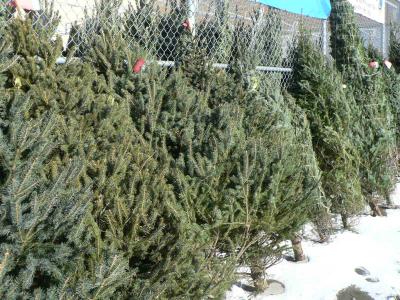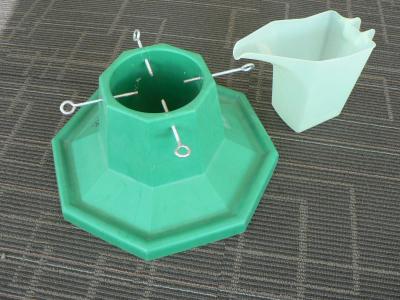Written by John Ball and published on https://extension.sdstate.edu/
There’s nothing better than walking into your home and breathing in the smell of fresh pine. It’s one of the many reasons why having a live Christmas tree is perfect for the holiday season.
Choosing a Christmas tree that is right for you doesn’t have to be complicated, but it’s important to plan ahead and come prepared to meet your perfect piney match. Here are some things to consider to help you choose the perfect Christmas tree:
Table of Contents
Choosing the Perfect Christmas Tree

Christmas tree lots are already beginning to spring up around the state and Thanksgiving marks the start of the Christmas tree season, with more than 30 million trees being sold between Thanksgiving and Christmas. Another 50 million homes use artificial trees either for convenience or environmental concerns. However, the traditional Christmas tree can be the environmental friendly way to celebrate the holidays. Real Christmas trees can come as close as the nearest choose-and-cut, while most artificial trees journey to your home starts in Asia. The real tree is made of wood (obviously) while the artificial one of plastic. And while you don’t have to buy an artificial tree every year, their average life span may be six to ten years before it ends up in a landfill where it will remain for a long, long time. The real Christmas tree, while used for only one season, can become valuable mulch, a winter bird feeder or even used as a fish habitat after the holidays.
Harvesting Your Own Tree

The best way to obtain the freshest tree is to harvest it yourself at a choose-and-cut Christmas tree farm or obtaining a Christmas tree permit from the Black Hills National Forest.
If cutting your own tree is not possible, here are some tips for checking freshness at a Christmas tree sales lot. First, give the tree a light, but vigorous shake. Only a few interior needles should fall out of the tree if it is fresh. If a pile of brown needles appears on the ground after shaking, it is not a fresh tree. Next, reach into a branch and pull the needles gently through your hand as you move out towards the tip. The needles should bend, not break, as your fingers run across them and the branch should only slightly bend to the touch. If the needles break off completely this is another indicator that the tree has already dried out too much. Likewise if the branch is not flexible akin to a wooden stick, the tree has already dried out and is not worth buying
Tree Types
FIR
Each species has it good points but the Fraser fir is probably one of the top favorites. The tree has a very pleasant scent, excellent needle retention – they will last the entire holiday season – and the branches are stiff enough to hold most ornaments (however if really heavy ornaments are to be placed on the tree go with a spruce). The bright green needles are white on the underside and this makes a very attractive display. Balsam fir is another good choice though the needles do not last quite as long and the branches are not as stiff. Canaan fir, another popular tree appears to have qualities similar to Frasier fir and is also becoming a popular Christmas tree.
PINE
Pines are very popular with Scotch pine probably the most popular Christmas tree in the country. It has a pleasant scent, excellent needle retention and the branches are stiff enough to hold heavy ornaments. Eastern white pine is another pine commonly sold at Christmas tree stand. The needle retention is not quite as long as Scotch pine, and the branches are very flexible meaning heavy ornaments may fall off. White pines do have very soft needles and if you are going to run into the tree in the middle of the night this is the one!
SPRUCE
Spruces are not as popular Christmas trees primarily due to their relatively poor needle retention. If you want to have a Colorado blue spruce as your Christmas tree, you probably should wait until a couple of weeks before Christmas to set it up, as the needles may only last that long. Once the needles begin to fall, blue spruce are about the worst tree in the house as the fallen needles are sharp and seem to find their way into socks and slippers. Blue spruce has the best needle retention of all spruces – they may last a few weeks or more – but does not have much of a fragrance. The branches are very stiff, however, and can support the heaviest ornaments. White spruce, also known as Black Hills spruce, although not a commonly available Christmas tree at lots it frequently is used in the Black Hills where it is cut from the National Forest. It does make a nice tree, particularly when cut fresh, though needle retention is poor. Black Hills spruce trees also do not have much of a fragrance and occasionally can produce a slight musky odor when the foliage is bruised.
Stand Selection & Tree Preparation

Regardless of whether you buy a tree from a lot or cut it yourself, once you get the tree home leave it outside in the shade while you set the stand up indoors. The choice of a stand is probably the most critical factor in maintaining the freshness of the tree once in the home. The stand should be able to hold one-half to one-gallon of water as the new tree may absorb this much water on the first day. A good rule-of-thumb is that a tree will use 1 quart of water per day for every inch trunk diameter at the base. If you have a tree with a 3-inch base, it may use 3 quarts of water per day after the first day.
Just before you bring the tree in the house cut the base between half to one-inch from the bottom. This will open the sap-filled pores that transport water through the tree. The base cut does not have to be slanted. The angle makes little difference in the amount of water absorbed so cutting perpendicular to the trunk is fine. Do not drill holes into the trunk or whittle the trunk smaller, neither will improve water uptake. Also brush off any debris or dirt on the base before placing it in the stand.
Watering & Care
Once the tree is in the stand add water and then never let the stand become empty. If the stand becomes empty for more than six hours, the tree’s pores plug up again. Water uptake will be significantly reduced, the tree will dry out sooner than expected, and the needles will soon begin to fall. If the tree stand does dry up for half a day or more there is nothing that can be done other than pull the tree out of the stand and recut the base – not a pleasant task once the lights and ornaments are already up.
Nothing needs to be added to the water in the stand to improve needle retention. Commercial “tree freshener” products do not significantly increase the life of the tree. Home remedies such as aspirin, sugar, soft drinks and vodka do not work and may be harmful to pets (or partyers) that may drink from the stand.
Place the tree in a spot that receives only indirect light from the windows and not near any heat duct. This will reduce water loss from the tree and prolong its freshness. Another tip to prolonging freshness is to start out with a clean stand. Before setting up the tree stand wash it out with a solution of about a capful of bleach to a cup of water. This will reduce the growth of microorganisms that may also plug up the tree’s pores.
Original post here https://extension.sdstate.edu/choosing-perfect-christmas-tree/.